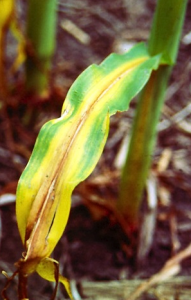Many corn fields have been repeatedly saturated by recent successive rainfalls. Numerous fields, particularly no-till fields, are yellowing.
While this could be due to several factors, one may be the lack or loss of Nitrogen. On sandy soils, N has probably leached below the root zone and on heavier textured soils some may have also leached but more than likely some denitrification has occurred where N is lost to the atmosphere.
Regardless, some supplemental N applications may be necessary. Sidedressing N is the best option but soils are so wet that it may be a week or so before growers can get in. In other cases, growers may not have such equipment. Fertilizer suppliers may have equipment to apply such products as UAN solutions or Urea(preferably with a urease inhibitor if not incorporated). If surface applied, N losses can occur if rain doesnot follow application within a day or two.
How much N to apply is also a question. If a good amount of N was applied before or at planting then 50 lbs/A of actual N is probably appropriate. If growers put little or no N down in hopes of sidedressing, then a good portion of their planned amounts will be needed.
The ideal time to apply sidedress N is between corn stage V6 and V8 (12-18 inches tall). If the growers have early and late planted corn that is yellow, then the early planted, taller fields should be fertilized first.


